Three rods of same dimensions are arranged as shown in the figure. They have thermal conductivities K1, K2 and K3. The points A and B are maintained at different temperatures. For the heat to flow at the same rate along ACB and AB, 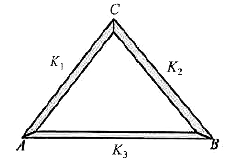 Solution in Kannada
Solution in Kannada
K3=K1K2K1+K2
K3=2(K1+K2)
K3=12(K1+K2)
K3=K1+K2
The correct Answer is:A
For steady flow, conductivity along ACB = Along AB
K1K2(K1+K2)/l=K3lorK1K2K1+K2=K3
Topper's Solved these Questions
Similar Questions
A body falls freely for 10 sec Its average velocity during this journey ( take = 10ms−2)
03:54View SolutionA ray of light travels from an opticaly denser to a rarer medium. The critical angle for the two media is c. the maximum possible deviation of the ray will be
01:37View SolutionTwo rods A and B of different materials are welded together as shown in figure. Their thermal conductivities are K1 and K2. The thermal conductivity of the composite rod will be
 02:46View Solution
02:46View SolutionTwo rods A and B of different materials are welded together as shown in figure. Their thermal conductivities are K1 and K2. The thermal conductivity of the composite rod will be
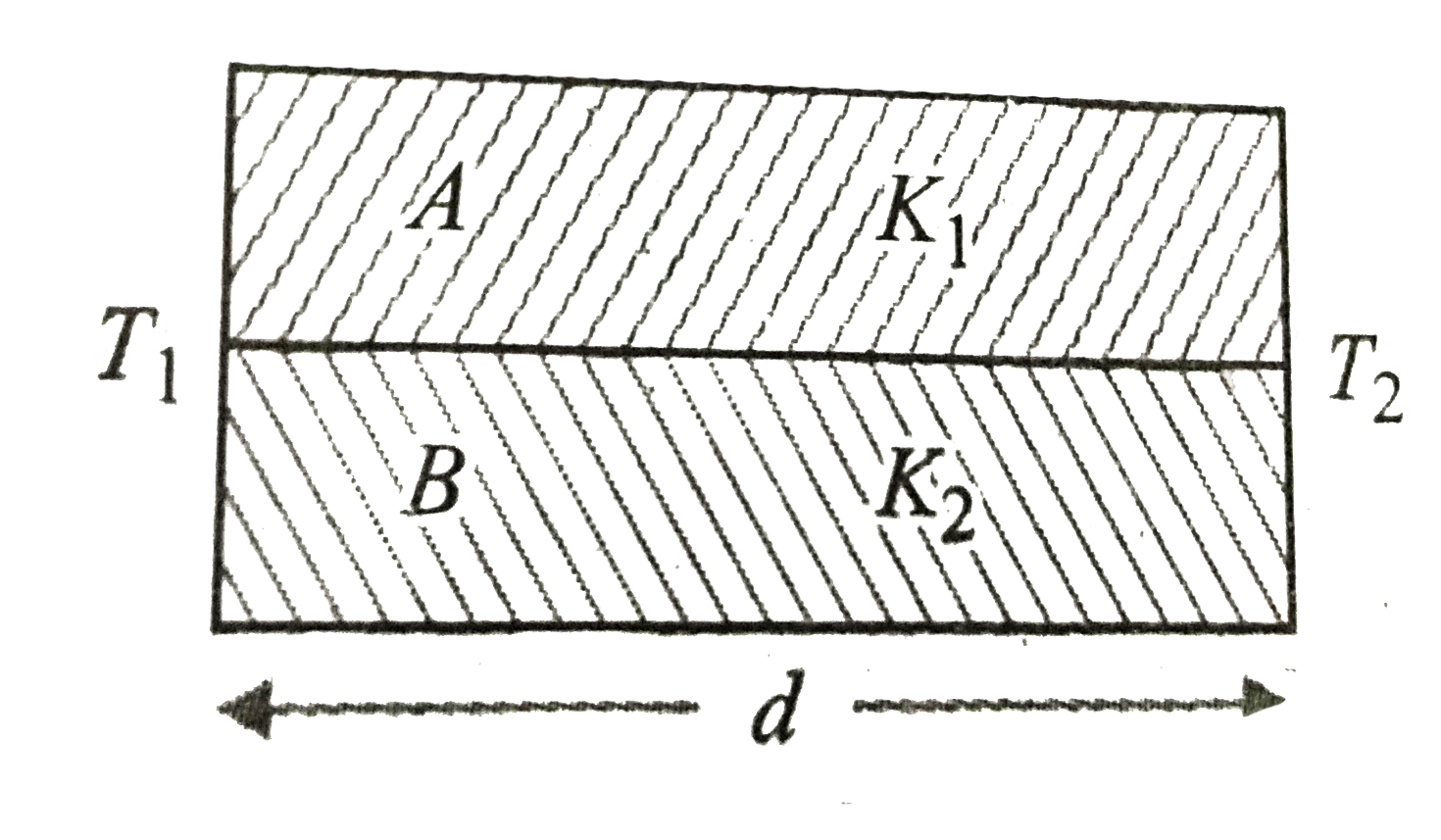 03:06View Solution
03:06View SolutionTwo rods one is semi circular of thermal conductivity K_(1) and otheir is straight of thermal conductivity K_(2) and of same cross sectional area are joined as shown in the The points A and B are maintained at same temperature difference. If rate of flow of heat is same in two rods then K_(1)//K_(2) is .
02:40View SolutionFive rods of same dimensions are arrranged as shown in the figure. They have thermal conductivities K_(1), K_(2), K_(3), K_(4) and K_(5) . When points A and B are maintained at different themperature, no heat flows through the central rod if
05:39View SolutionTwo rods of same length and area of cross-section A_(1)" and" A_(2) have their ends at the same temperature. If K_(1) "and" K_(2) are their thermal conductivities, c_(1) "and" c_(2) are their specific heats and d_(1) "and "d_(2) are their densities, then the rate of flow of heat is the same in both the rods if
04:40View SolutionFive rods of same dimensions are arranged as shown in the figure. They have thermal conductivities K _(1) , K_(2) , K _(3) , K_( 4) and K_( 5) . When points A and B are maintained at different temperatures, no heat flows through the central rod if
02:11View SolutionRate of heat flow through two conducting rods of identiclal dimensions having thermal conductivities K_(1) and K_(2) and Q_(1) and Q_(2) when their ends are maintained at the same difference of temperature individually. When the two rods are joined in series with their ends maintained at the same temperature difference (as shown in the figure), the rate of heat flow will be
03:17View SolutionFive rods of same dimensions are arranged as shown in the figure. They have thermal conductivities k1,k2,k3andk5. When points A and C are maintained at different temperature, no heat flows through the central rod if
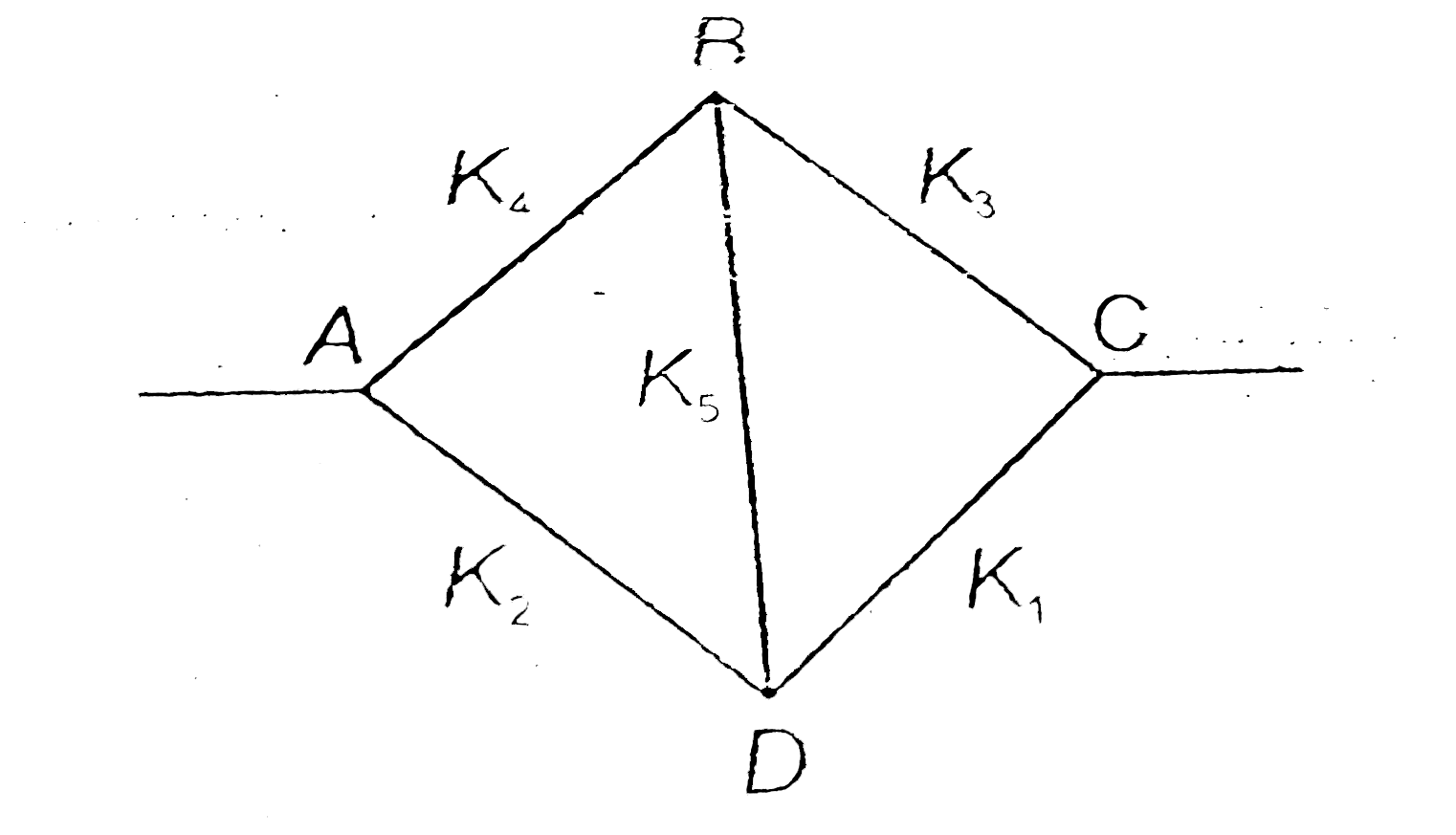 01:45View Solution
01:45View SolutionTwo different metal rods of the same length have their ends kept at the same temperature theta_(1) , and theta_(2) with theta_(2) gt theta_(1) . If A_(1) and A_(2) are their cross-sectional areas and K_(1) and K_(2) their thermal conductivities, the rate of flow of heat in the two rods will be the same it:
06:03View SolutionTwo metal rods of same length have same temperature difference between their ends. Their thermal conductivities are K_(1) and K_(2) and cross-sections A_(1) and A_(2) respectively. What is the condition for the same rates of flow of heat ?
07:50View Solution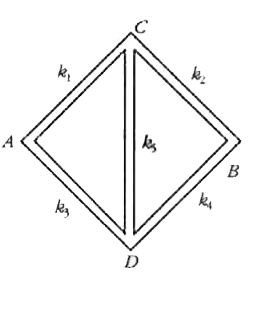
Five rods of same dimensions are arranged as shown in the figure. They have thermal conductivities k1,k2,k3,k4andk5 when points A and B are maintained at different temperatures. No heat flows through the central rod if04:57View SolutionFive rods of the same size are arranged as pictured. Their thermal conductivities K_(1), K_(2), K_(3), K_(4) And K_(5) is. When the points A and B are placed at different temperatures, there is no heat flowing through the middle rod, if
02:19View Solutionसमान आकार की तीन छड़ें चित्रानुसार व्यवस्थित की गई हैं इनकी ऊष्मा चालकताएँ K1,K2 एवं K3 है। बिन्दु P व Q को अलग-अलग तापों पर इस प्रकार रखा जाता है, कि PRQ व PQ के अनुदिश ऊष्मा प्रवाह की दर समान है, तब
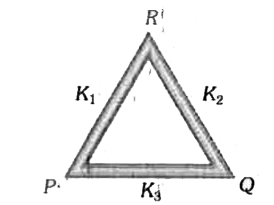 04:33View Solution
04:33View Solution

